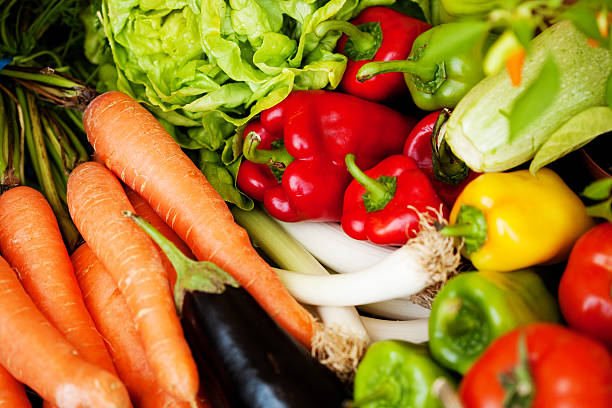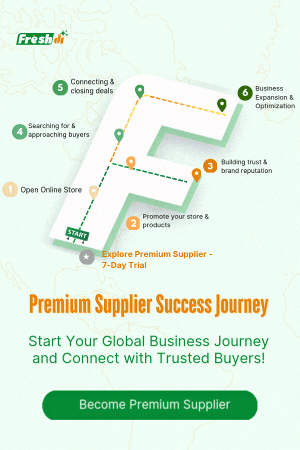Introduction – Indonesia’s Fresh Vegetables Market by the Numbers
When it comes to fresh vegetables, Indonesia is a powerhouse in Southeast Asia — and a growing contender on the global stage. With fertile volcanic soil, a tropical climate, and an agricultural workforce steeped in generations of farming know-how, Indonesia produces a wide variety of vegetables that are increasingly finding their way onto international plates.
In 2023 alone, Indonesia exported around 5.2 billion kilograms of vegetables, generating approximately $626.69 million in revenue. It’s not just about quantity either — Indonesian exporters are now making waves in quality, certifications, and supply consistency. Countries like Japan, Thailand, South Korea, Singapore, and India are major buyers, drawn by the richness and reliability of Indonesian produce.
For businesses looking to source fresh vegetables, relying on guesswork or outdated directories just won’t cut it. A data-driven approach is now essential — and platforms like Freshdi make this possible by offering real-time market insights, verified supplier data, and RFQ (Request for Quotation) trends to help you make smarter sourcing decisions.
Deep Dive – Key Production, Export Statistics & Current Demand Data
Let’s break down the numbers a bit.
In 2023:
– Indonesia exported 5.2 billion kg of vegetables.
– Total export revenue hit $626.69 million.
– Japan alone accounted for a whopping $552.71 million of this amount.
– Other key destinations included Thailand, South Korea, Singapore, and India.
Top-performing export vegetables included:
– Shallots
– Cabbage
– Chilies
What’s interesting is how platforms like Freshdi are reflecting these trends in real time. A spike in RFQs for shallots and frozen vegetables on the platform mirrors growing international demand. This kind of alignment between trade data and buyer activity helps validate sourcing strategies — particularly for buyers seeking reliable, high-volume exporters.
Top 4 Verified Fresh Vegetables Suppliers in Indonesia – Proven Export Performers
Choosing the right supplier is everything. Based on export volumes, certifications, international presence, and direct feedback from Freshdi users, here are the Top 4 Fresh Vegetables Suppliers in Indonesia for Q3 of 2025:
1. Samino Mebel
While the name might sound like a furniture business, Samino Mebel has quietly emerged as a strong, certified exporter of niche and high-demand vegetables. Their reputation for reliable shipment timing and strict quality checks has made them a go-to for Japanese and South Korean buyers.
2. PT. Usaha Mandiri Indotama
Known for high-volume exports of shallots and other root vegetables, this supplier has deep connections with farming cooperatives across Java. Their certifications, including ISO and HACCP, ensure they meet international standards — making them a top choice for multinational importers.
3. Jmb Ind Export Co.
Jmb Ind Export Co. has built a name for itself by focusing on cold-chain logistics for perishable vegetables like cabbage and leafy greens. Their investment in post-harvest cooling systems has helped minimize spoilage, earning them top marks from Freshdi’s buyer community.
4. KS.Sayur
KS.Sayur is a rising star, especially in the frozen vegetables game. They’ve posted consistent growth in export volume and recently expanded their product range to include organic options. Their agility in adapting to market demand has earned them a solid spot in this quarter’s top list.
Dynamic Ranking Note
Keep in mind, platforms like Freshdi update these rankings regularly based on supplier performance, RFQ response times, and export success rates. So, while these four reign supreme in Q3 of 2025, future quarters may highlight new leaders in the space.
Market Navigation – Statistical Trends, Pricing Analysis & Export Dynamics
Export Trends and Demand Data
The Indonesian vegetable export market is evolving fast. Here’s what you need to know:
- Top Earners: Shallots, cabbage, and chilies.
- Emerging Segment: Frozen vegetables — $27 million in 2023 with a 7.52% growth.
- Main Buyer for Frozen Veggies: Japan (73% of exports), followed by the U.S., Saudi Arabia, Malaysia, and Philippines.
This demonstrates a growing trust in Indonesian cold-chain capabilities, especially for IQF (Individually Quick Frozen) vegetables. These trends are also visible in the RFQ activity on Freshdi, where frozen vegetable inquiries have surged by over 20% in the last six months.
Seasonal Price Fluctuations
Vegetable prices in Indonesia are anything but flat. For example:
- Shallots: Prices spike during the rainy season (December–February) due to poor harvesting conditions.
- Cabbage and Chilies: Generally stable, but costs can rise with transport disruptions or regional export duties.
Understanding these seasonal ups and downs is crucial. Freshdi helps buyers track historical pricing trends and plan purchases ahead of time, potentially saving thousands on bulk orders.
Forecasts and Market Outlook
Looking ahead, the numbers are promising:
- The frozen food market is projected to hit $5.9 billion by 2033, growing at a 6.31% CAGR.
- The processed/frozen vegetable segment alone is expected to generate $7.44 billion by 2025, with 6.71% annual growth through 2030.
This means more investment in food safety, packaging, and export logistics — all of which benefit buyers looking for reliability and scalability.
Latest Developments in Trade Policy
- Direct Durian Exports to China: While not directly tied to vegetables, this represents Indonesia’s broader push to bypass intermediaries and increase margins — a positive sign for all agricultural exports.
- Indonesia–Peru Free Trade Deal: Signed in August 2025, this opens new doors for Indonesian vegetable exporters in South America.
- EU Free Trade Talks: A finalized deal by 2026 could increase vegetable exports by 5.4% across Europe — a huge opportunity for proactive buyers.
These developments reflect a government committed to expanding agricultural exports and improving trade conditions.
Conclusion – Leveraging Data for Strategic Sourcing
Indonesia’s fresh vegetable export market is not just big — it’s getting smarter, faster, and more competitive. With billions in export value, dynamic supplier activity, and growing global demand, the country is positioning itself as a top-tier sourcing destination.
But here’s the thing: not all suppliers are created equal. That’s why platforms like Freshdi are game-changers. They go beyond directories, offering real-time RFQ trends, supplier verification, historical pricing data, and buyer feedback — all in one place.
If you’re in the business of sourcing fresh vegetables, make your choices based on data, not guesswork. Use tools that give you transparency, speed, and confidence in every deal.
Key Takeaways
- Indonesia exported 5.2 billion kg of vegetables in 2023, earning $626.69 million.
- Japan is the largest importer, especially for frozen and fresh shallots.
- The Top 4 Suppliers in Q3 2025 are: Samino Mebel, PT. Usaha Mandiri Indotama, Jmb Ind Export Co., and KS.Sayur.
- Seasonal considerations and export conditions affect pricing and availability.
- Freshdi offers dynamic, data-backed rankings and supplier insights tailored to global buyers.
Checklist for Buyers – Fresh Vegetables from Indonesia
✅ Check past export performance on Freshdi
✅ Verify certifications (e.g., HACCP, ISO)
✅ Monitor seasonal price trends
✅ Compare RFQ response times
✅ Evaluate logistics (cold chain, packaging, delivery timelines)
✅ Consider emerging markets (e.g., Peru, EU) for long-term strategy
Future Outlook
Looking toward 2026 and beyond, Indonesia’s focus on bilateral trade agreements, improved export infrastructure, and sustainable farming will only strengthen its position in the global vegetable trade. Buyers who align with this momentum — by using platforms like Freshdi — will have a competitive edge in terms of price, quality, and supplier reliability.
FAQs
1. What are the most exported fresh vegetables from Indonesia?
Shallots, cabbage, and chilies lead the pack, with growing demand from Japan, Thailand, and South Korea.
2. Why does Japan dominate Indonesia’s vegetable export market?
Japan values high-quality, pesticide-free produce and has strong trade ties with Indonesian exporters who meet their strict standards.
3. How can I verify a supplier’s export history?
You can use Freshdi to access verified export data, buyer reviews, and performance analytics for each supplier.
4. When is the best time to buy Indonesian shallots?
Avoid the rainy season (December–February) when prices typically spike due to harvesting challenges.
5. Are frozen vegetables from Indonesia a good sourcing option?
Absolutely. The segment is growing fast, with modern cold-chain logistics and high demand from markets like Japan and the U.S.
For more insights, supplier connections, and live RFQ data, visit Freshdi.com.


